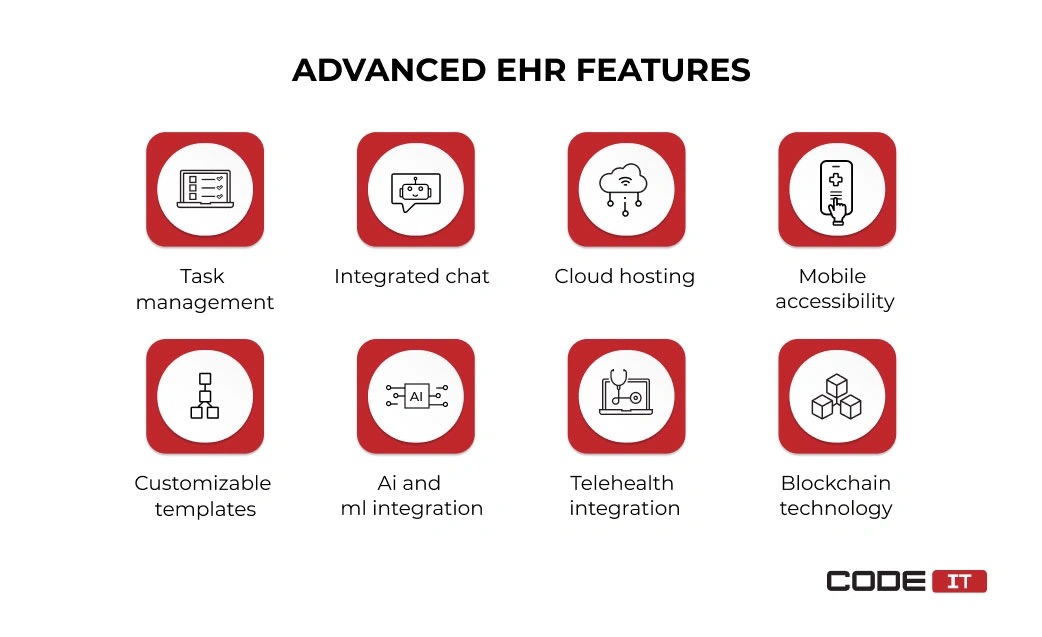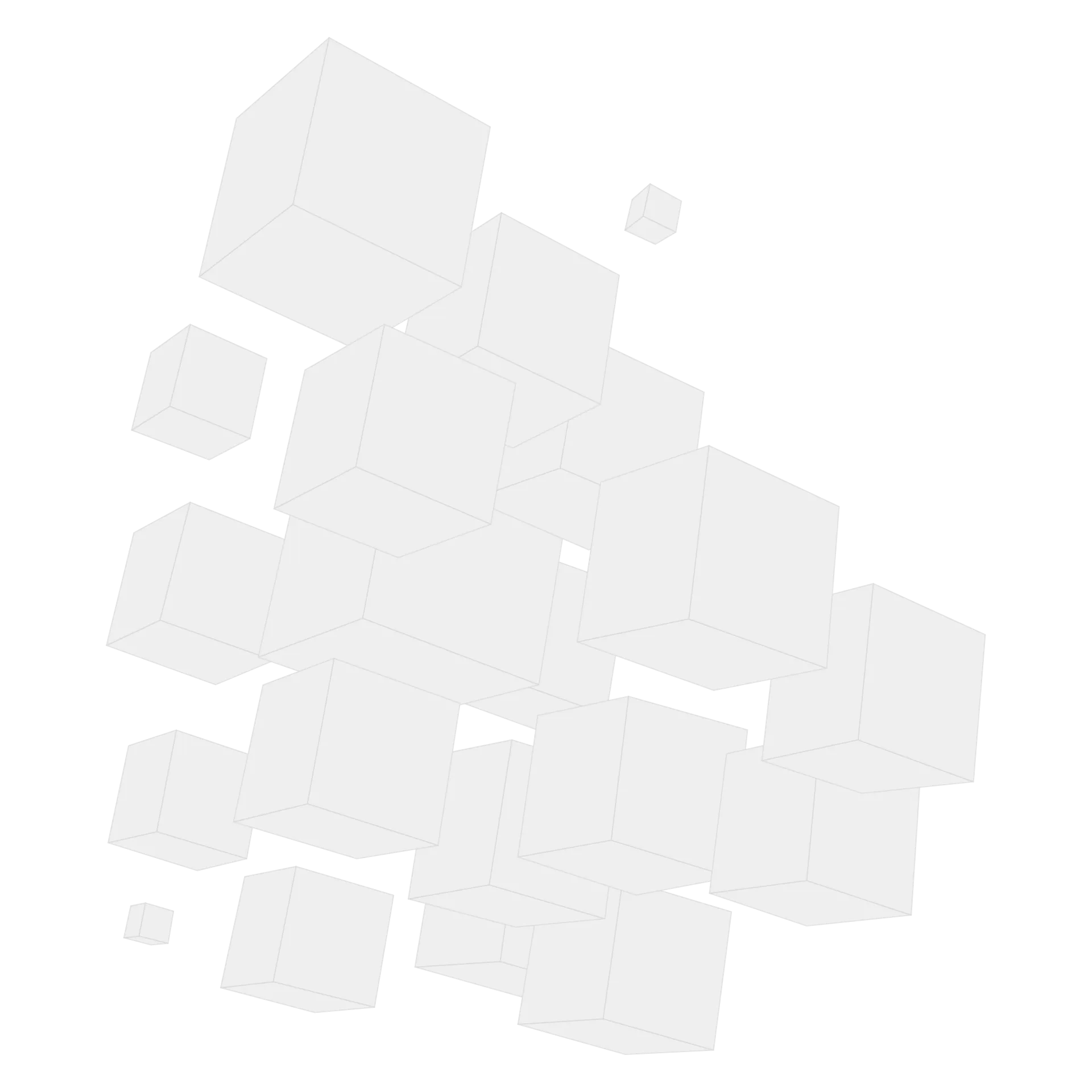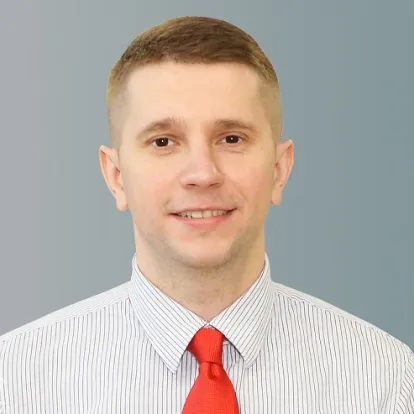EHR Features Checklist: Basic and Advanced


Electronic health record (EHR) is a patient’s medical data repository. EHR records are designed to be accessed by different healthcare providers. The records may contain a lot of crucial information, including:
- complete medical history
- diagnoses and treatments
- medication information
- immunization data
- allergies
- lab results
EHRs help replace paper documents and enable real-time data sharing securely across different healthcare providers.
Since there is no unified global standard for EHR systems, they can comprise different functionality. The baseline and advanced features of EHR software are as follows.
| Basic Features | Advanced Features |
|---|---|
| 1. Electronic document management | 1. Task management |
| 2. Patient portal | 2. Integrated chat |
| 3. E-prescribing | 3. Cloud hosting |
| 4. Distributed access control | 4. Mobile accessibility |
| 5. Data interoperability | 5. Customizable templates and workflows |
| 6. Integration with labs | 6. AI and ML integration |
| 7. Clinical dashboard | 7. Telehealth integration |
| 8. Patient charting | 8. Blockchain technology |
| 9. Scheduling | |
| 10. Reporting |
What is EHR software: definition and facts
EHR (Electronic Health Records) software is key to managing health records effectively. These systems provide a detailed patient medical history, improving care and healthcare interactions. They go beyond simple data storage and analysis.

In mere words, it stores and normalizes the information pertaining to patients’ medical history and acts extensively, which means that EHR demonstrates wider functionality and usability.
Also, it provides the opportunity to integrate patient data into the workflows of multiple healthcare providers simultaneously, thus eliminating any communication bottlenecks and increasing healthcare system productivity in delivering optimal solutions to customers.
Electronic Health Records Benefits
With diverse EHR features and integrations, the software streamlines data sharing among providers. It enables easy data access and efficient management. This benefits both patients and medical services, simplifying complex processes.
The top five benefits of an EHR system are as follows.
- Real-time data access update. Authorized users can access centralized storage to read/write data in real-time.
- Reduced errors. Automatic data validation and pre-population help decrease the number of errors in medical records.
- Patient access. Dedicated portals enable patients to access and check their medical records online.
- Decision support. Feature-rich systems can analyze health records and provide medical reasoning and treatment suggestions.
- Reporting and analytics. Business intelligence solutions help summarize and visualize large datasets. Also, they can provide valuable insights.
Build an EHR system with a custom feature set

Business First
Code Next
Let’s talk
Ten essential EHR features
The essential EHR software features enable the baseline functionality. They help perform managerial, research, communicative, and clinical functions.

1. Electronic Document Management
It eliminates paperwork and reduces the time medical staff spends on administrative routines. Also, this EHR systems feature enables expanded efficiency, monitoring capabilities, and upgraded workflow speed.
Real-world feature application
- Patient admission and checkout
- Medical record creation and update
- Prescription management
- Lab test results management
- Insurance claims management
2. Patient Portal
Patients use a dedicated portal to access to their health records, schedule appointments, read messages, submit requests, etc.
By encompassing patient portal features, healthcare providers enable access to educational materials for patients and reinforce their engagement, which translates into a decrease and an increase in health awareness.
Real-world feature application
- Access to personal health records
- Patient self-service functionality
- Prescription refill request submission
- Access to educational materials
- Communication with doctors and medical staff
3. E-Prescribing
It is one of the baseline components of an EHR system. It helps facilitate the prescription procedure and curb medical errors. Using the feature enables clinics to automatically submit requests to medicine dispensing units and pharmacies via the Internet.
Real-world feature application
- Sending electronic prescriptions to dispensing units
- Allergies drug interactions check
- Medical data pre-population
- Medication history access
- Automatic dosage calculation
4. Distributed Access Control
It enables role-based access to information for increased security. Doctors and hospital admins get customizable access to patients’ data. In addition, the feature cultivates privacy awareness as well as provides dynamic interactions within the workflow.
Real-world feature application
- Role-based data access
- HIPAA compliance
- Role permission management
- Unauthorized access prevention
- Fast staff onboarding and staff turnover
5. Data Interoperability
Medical data interoperability describes unified message rules that help exchange information between systems that use different technologies. The implication of standardized messages helps healthcare providers create integration solutions by connecting diverse software.
Real-world feature application
- Data sharing across multiple providers
- Anonymous data sharing for research and polling purposes
- Telehealth consultations
- Third-party software integration
- Remote patient data monitoring
Medical Data Interoperability With HL7 EMR And EHR Standards
6. Integration with Labs
It is one of the key EHR features that enables instant data exchange capabilities and, thus, seamless collaboration with the lab technicians. EHR software creates wide opportunities for streamlining treatment immediately upon processing and introducing the review of lab results.
Real-world feature application
- Automated lab test result delivery
- Image processing
- Lab test results summarization and visualization
- Automated lab and clinic collaboration workflows
- Error detection and data validation
7. Clinical Dashboard
A dashboard assists physicians in understanding their patients in a much better way. It contains the results of treatment as well as data on all the treatment processes of a specific patient’s medical history. The results are introduced in various diagrams, which provide doctors with insights based on accurate statistical data.
Real-world feature application
- Centralized access to a patient’s health data
- Live-time data updates and notifications
- Medical data analysis and presentation
- Patient-focused dashboard customization
- Treatment outcomes tracking
8. Patient Charting
By incorporating this feature into EHR software, doctors get patient-specific records created in real time. The records comprise information on demographics, billing and insurance details, eligibility, and other custom entries.
Real-world feature application
- Creation of patient health profiles
- Symptom submission and tracking
- Clinical notes check by patients
- Update of information about patients
- Patient consent and legal documents storage
9. Scheduling
This feature enables the opportunity to make appointments and follow-up integrated into a clinic’s workflow. Electronic scheduling ensures the flexibility of the system as well as its capability to store relevant time entries reliably. Patients can easily pick and book the most relevant time slots for physical screening or telemedicine sessions.
Real-world feature application
- Online appointment scheduling
- Healthcare facility resources booking
- Doctor schedule management
- Automated reminders and follow-ups
- Procedures scheduling
10. Reporting
It is one of the must-have enterprise EHR features that lets doctors compose reports and share them instantly. Using templates and medical data pre-population, the feature helps significantly reduce the time needed to compose and share a report.
Real-world feature application
- Report template creation and updates
- Medical data acquisition and pre-population
- Automated report composition
- Medical data anonymization for research purposes
- Automated report sharing upon approval
Let’s build an EHR system comprising baseline features

Business First
Code Next
Let’s talk
Eight advanced EHR software features
The implication of advanced EHR features helps deliver outstanding patient experience. They help increase performance by automating processes and incorporating advanced technologies.

1. Task Management
Changing to an EHR must visibly offload the medical staff by setting priorities and performing tasks time-effectively. The feature allows for the creation of a collaborative environment by assigning, tracking, and managing tasks.
Real-world feature application
- Appointments scheduling
- Assigning tasks to medical staff
- Prescription refill requests review and approval
- Patient follow-up and reminders management
- Patient activities review
2. Integrated Chat
With this feature, patients get access to communication tools. They can chat with their physicians via text messages or virtual telehealth sessions. The EHR software can be integrated with third-party messengers.
Real-world feature application
- Real-time communication
- Automated follow-ups and announcements
- Cross-department messaging
- Medical images and document sharing
- AI chatbot integration
AI Chatbots in Healthcare
3. Cloud Hosting
The usage of cloud infrastructure assists healthcare providers in ensuring the secure and adequate maintenance of EHR software. Cloud-based infrastructure helps achieve high system resilience and security. Also, it’s easy to maintain and scale up cloud servers.
Real-world feature application
- Remote access to EHR software
- Real-time data synchronization
- Automated data backup creation
- Disaster recovery tools
- Hassle-free maintenance
4. Mobile Accessibility
Mobile applications help improve patient experience by enabling fast and convenient access to crucial EHR features. Also, mobile devices help effectively deliver reminders. The UI/UX of EHR systems should be designed to deliver all the functionality on portable devices like smartphones and tablets.
Real-world feature application
- Messaging and reminder notifications
- Mobile telehealth consultations
- On-the-go access to patient data
- Online scheduling
- Remote patient monitoring
Mobile App Development Services
5. Customizable Templates and Workflows
Advanced EHR and practice management software features enable physicians to streamline and personalize patient care. They can create automated pipelines tailored to their unique needs.
Real-world feature application
- Workflow optimization
- Processes automation
- Custom template creation
- Data acquisition and validation
- Standardization adoption
6. AI and ML Integration
Artificial intelligence (AI) and machine learning (ML) in EHR help extract insights from medical data. Self-learning algorithms can detect hidden patterns and forecast possible readmissions or severe health changes.
Also, the technologies can analyze medical images, highlighting possible signs of illness that doctors must thoroughly review.
Real-world feature application
- Medical data analysis
- Predictive analytics
- Medical image processing
- Natural language processing
- Fraud detection
7. Telehealth Integration
The integration of telemedicine solutions into EHR software helps medical providers improve efficiency. The feature enables the opportunity to run telehealth sessions, having instant access to medical data and useful tools.
Real-world feature application
- Remote consultation and screening
- Virtual prescription management
- Prescription refill request processing
- Remote patient monitoring
- Follow-ups and notifications
8. Blockchain Technology
The application of blockchain technology as a decentralized ledger of transactions within EHR can redefine health data in terms of ensuring information immutability and cybersecurity. Besides, it can effectively solve the issue of Interoperability, which often arises as a challenge in traditional EHR development.
Real-world feature application
- Secure patient data exchange
- Healthcare data interoperability implementation
- Fraud prevention
- Patient consent management
- Public health surveillance
Enrich your EHR with advanced features

Business First
Code Next
Let’s talk
Out-of-shelf solutions and features
The EHR software market has been one of the major medical industry sectors for almost two decades and has lots of off-shelf offers.
The top ready-to-use EHR systems and features are as follows.
1. Care 360
This software is designed specifically for ambulatory services and is marked by its diverse and accurate reports capability. To foster a culture of efficient communication, developers included the voice recognition option in the platform dashboard, eliminating the need for time-consuming searches.
In addition, there is an e-prescribing function to facilitate doctors’ work. Overall, its electronic management functionalities are a great assistant in ensuring increased productivity. New EHR systems appear quite often, but Care 360 remains the leader in the segment.
| Care 360 Features | ||
| Lab order management | Messaging | ePrescribing |
| Document management | Mobile access | Personal health record |
| Patient reminders | Clinical decision support | Reporting |
| Multi-system interoperability | Practice management | |
2. Kareo Clinical
It is a full-fledged module for systematic work on patients’ data across any device. It features e-prescriptions, optimized note-taking, one-click billing, and tabulation of patients’ data without extra effort.
Lastly, the Kareo Clinical interface enables doctors to send messages directly to their patients anytime and secure this information to prevent privacy concerns.
| Careo Clinical Features | ||
| Dashboard | Charting | ePrescribing |
| Lab management | Patient portal | Bill management |
| Messaging | Scheduling | |
3. TherapyNotes
It is an innovative tool for behavioral health practice management, featuring a variety of options for easy note-taking, scheduling appointments, billing operations, and getting professional consultancy and support with unlimited phone service.
In addition, there is a noiseless system of effective reminders and electronic claims that considerably reduces time consumption on routine activities for patients and physicians alike.
| TherapyNotes Features | ||
| Scheduling | Notes and electronic records | Electronic billing |
| Payment processing | Client portal | Telehealth |
| ePrescribing | ||
4. eClinicalWorks
As an electronic health record example, we bring you eClinicalWorks. It is an award-winning EHR system designed to pipeline the medical service workflow in the interest of patients and healthcare providers. It has many accolades for its capabilities in meeting customers’ needs and providing the highest usability. Its feature set includes integrated telehealth visits, patient charting, and a portal packed with additional handy functions.
| eClinicalWorks Features | ||
| Virtual assistant | Mobile device support | Dashboard |
| Medical data interoperability | ePrescribing | Medical record editing |
Custom-built EHR software
However, searching for a trusted software vendor is better if you’re looking for truly custom healthcare software solutions.
Despite the availability of ready-to-use solutions, hospitals often need more engagement in regard to the full-scale application of off-shelf EHR systems due to previously unsatisfying user experiences.
The main problem with utilizing the value of electronic health records in workflows as innovative technology is the lack of usability when providing efficient health information exchange.
The core benefits of building a custom EHR system are:
- High customization. Healthcare providers can create EHR solutions with custom feature sets.
- Clinic-centric problems. Custom EHR solutions can be tailored for solving defined issues.
- Tools integration. A large assortment of third-party services and tools can be integrated to enrich the functionality of an EHR.
- Complete software management. The infrastructure and software is fully managed by a healthcare provider.
- No vendor lock-in. 100% of an EHR’s codebase is managed and maintained by a healthcare provider. New components of an EHR system can be developed and added upon a need.
Build vs Buy Software
Key components of EHR system implementation
The crucial components of EHR software development and implementation include the following.
UX/UI Design
The EHR systems are aimed at introducing user interfaces that are effective and intuitive. Not giving enough thought to choosing the optimal EHR software interface design might result in data mismanagement or technical difficulties for medical staff. Therefore, major criteria in designing EHR system functionalities must pertain to emphasizing key elements, creating clarity in terminology, and picking colors that would support users in navigation.
HIPAA and GDPR Compliance
Any organization or person in the territory of the US must comply with HIPAA rules regardless of the public or private status of the healthcare provider, which means that medical service practitioners must create a flexible and verified system meeting the defined requirements about administrative and technical safeguards of confidentiality, integrity, and security of patients’information.
GDPR claims to protect patients’ rights and introduces consistent guidelines for patients’ privacy. These regulations coordinate the collection of EU residents’ personal data. The package of compliance requirements pertains to all kinds of personal information, including names, residency/addresses, contact details, and demographic-related entries.
Certification
Custom EHR software should be certified by the Office of the National Coordinator for Health Information Technology, which means that the software meets standards for functionality and security.
In particular, EHR software must offer portable, structured data and patient-specific options, ensuring efficient and secure data sharing. It should be noted that EHR systems for US-based citizens are required to be certified by ONC-ATCB certification. For EU-based entities, the EuroRec certification is required (it implies the certification criteria similar to the ones stated by ONC-ATCB).
Concluding thoughts
The global healthcare community recognized the benefits of EHR software applications due to the positive impact of electronic health records on the quality of medical care, which has been proven multiple times to best serve patients’ interests.
Here is the checklist for EHR features, comprising basic and advanced components.
The baseline EHR software features are:
- Electronic document management
- Patient portal
- E-prescribing
- Distributed access control
- Data interoperability
- Integration with labs
- Clinical dashboard
- Patient charting
- Scheduling
- Reporting
The advanced EHR features include the following:
- Task management
- Integrated chat
- Cloud hosting
- Mobile accessibility
- Customizable templates and workflows
- AI and ML integration
- Telehealth integration
- Blockchain technology
Need to develop an EHR with a custom feature set?

Business First
Code Next
Let’s talk
FAQ
EHR systems are designed to provide a comprehensive overview of patients’ medical data and, hence, focus on patients’ health and interactions with healthcare providers, reaching far beyond the storage of medical history and standard analysis of clinical data originally compiled and collected by hospitals.
EHR software has wide capabilities in terms of distributing the data among healthcare providers and enabling easy data search along with smooth management regardless of the process complexity, which greatly benefits both patients and medical service providers.
The components of an EHR system that are highly required within software development for performing managerial, research, communicative, and clinical functions in no particular order include:
- Electronic document management
- Patient portal
- E-prescribing
- Distributed access control
- Data interoperability
- Integration with labs
- Clinical dashboard
- Patient charting
- Scheduling
- Reporting
Advanced EHR features that help enrich the functionality include:
- Blockchain technology
- Task management
- Integrated chat
- Cloud hosting
- Mobile accessibility
- Customizable templates and workflows
- AI and ML integration
- Telehealth integration
Critical stages in EHR development cover:
- GDPR compliance
- HIPAA Compliance
- EHR system certification
- Meaningful Use
- UI/UX
The top 5 EHR systems is:
- Care 360
- Kareo Clinical
- TherapyNotes
- eClinicalWorks
- CERNER
Build your ideal
software today






